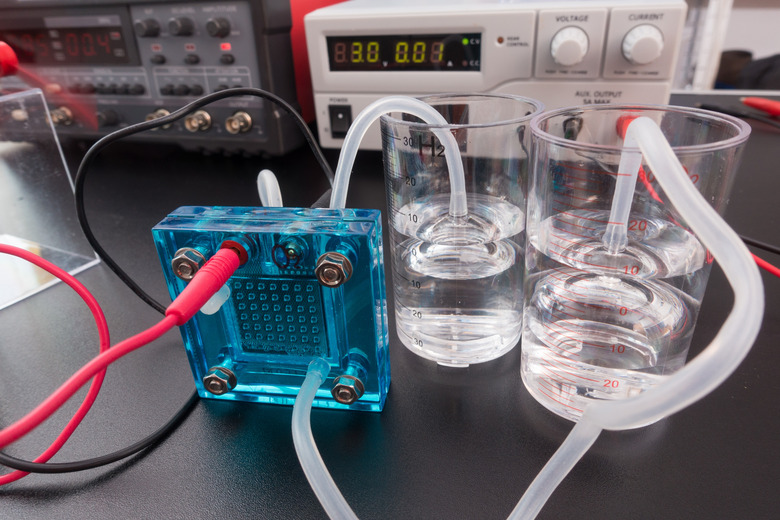What Is The Valence Of Hydrogen?
Atoms join together with chemical bonds by sharing electrons. This is based on how many electrons a given element has filling its electron clouds. However many electrons there are in the outermost electron cloud that are available for sharing is equivalent to the valence number.
TL;DR (Too Long; Didn't Read)
Hydrogen and all the other elements in the first group of the period table have a valence of one.
Valence Electrons
Valence Electrons
Valence electrons are the electrons in the highest energy level available for chemical bonding. In a covalent bond, these valence electrons are available to be shared with another atom to fill available energy levels. This outermost level has eight potential electrons, but when all eight electrons are present, the resulting chemical is an inert, noble gas. Atoms with less than eight electrons in their outermost shells will bond with other atoms to share enough electrons to make eight. For example, a fluorine atom with seven valence electrons wants to share one electron from another atom to make eight valence electrons.
Valence of Hydrogen
Valence of Hydrogen
Hydrogen is a unique atom, because it has only two spots in its outermost electron level. Helium has two electrons and exhibits the properties of a noble gas. Hydrogen's valence number is one, because it has only one valence electron and needs only one shared electron to fill its energy levels. This means it can bond with many elements. For example, four hydrogen atoms can bond with a carbon atom, which has four valence electrons, to form methane. Similarly, three hydrogen atoms can bond with a nitrogen atom, which has five valence electrons, to form ammonia.
Other Hydrogen Compounds
Other Hydrogen Compounds
Because hydrogen can either share an electron or lose an electron to have a full or empty outer shell, it can form ionic bonds as well. Hydrogen can give its lone electron to a chemical like fluorine or chlorine which have seven electrons in their outermost shells. Similarly, because hydrogen has properties of both group one and group seven on the periodic table, it can bond with itself to make hydrogen molecules. Hydrogen can also lose its valence electron in solution to make a positive hydrogen ion, which is what causes acidity in solution.
Valence of Other Atoms
Valence of Other Atoms
Hydrogen and all the other atoms in group one of the periodic table (including lithium, sodium and potassium) have a valence of one. Group two atoms (including beryllium, magnesium, calcium, strontium and barium) have a valence of two. Atoms with more than two valence electrons can have more than one valence, but their maximum valence is usually the same number as their valence electrons.
Groups three through 12 (the transition elements, including most metals) have varying valences between one and seven. Group 13 atoms (including boron and aluminum) have a maximum valence of three. Group 14 atoms (including carbon, silicon and germanium) have a maximum valence of four. Group 15 atoms (including nitrogen, phosphorus and arsenic) have a maximum valence of five. Group 16 atoms (including oxygen, sulfur and selenium) have a maximum valence of six. Group 17 atoms (including fluorine, chlorine and bromine) have a maximum valence of seven. Group 18 atoms, the noble gases (including neon and argon), have eight valence electrons, but because they almost never share these electrons, they are said to have a valence of zero.
Cite This Article
MLA
Carr, Kevin. "What Is The Valence Of Hydrogen?" sciencing.com, https://www.sciencing.com/valence-hydrogen-8343809/. 5 April 2018.
APA
Carr, Kevin. (2018, April 5). What Is The Valence Of Hydrogen?. sciencing.com. Retrieved from https://www.sciencing.com/valence-hydrogen-8343809/
Chicago
Carr, Kevin. What Is The Valence Of Hydrogen? last modified March 24, 2022. https://www.sciencing.com/valence-hydrogen-8343809/
